5 ways single-cell genomics can transform our understanding of biology
Single-cell sequencing is increasingly becoming an essential part of the biologists’ toolkit.
Single-cell sequencing is increasingly becoming an essential part of the biologists’ toolkit. The ability to measure changes in the genomes, epigenomes and transcriptomes of individual cells can enable a whole new perspective on how living systems work.
Methods developed with biomedical science in mind are now being applied across the tree of life: from communities of single-celled bacteria and protists through to multicellular plants and animals rich in diverse tissues and cell types, single-cell sequencing offers a new route to understand the complexity of living things.
Dr Iain Macaulay, who heads up the single-cell genomics team here at the Earlham Institute in Norwich, tells us why he thinks single-cell sequencing is important, and how it can change the way we think about biology.
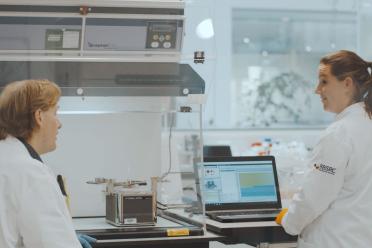
Regardless of the biological system we want to study, we can think of it as a community composed of individual cells. Whether it is the root of a wheat plant, a developing mouse embryo or a human colon populated with bacteria, it is a system made of cells. Each cell within this system will use its individual genome in different ways to produce a different cellular phenotype. Ultimately, each cell can use this phenotype to perform different functions within the overall organism or ecosystem.
In the last ten years there have been incredible advances in technologies which enable us to isolate and read the genomes, epigenomes, transcriptomes and even proteomes of individual cells – in experiments ranging in scale from hundreds to hundreds of thousands of cells. Being able to read out this information at such high resolution and scale allows us to understand the diversity of cells within a system. This could mean anything from reading out the genetic diversity of single-celled organisms in a pond to understanding the diversity and effects of mutations in a tumour.
This technology continues to develop at an incredible pace. For certain questions, we need tools that enable us to access the genomes, transcriptomes and epigenomes of individual cells at high resolution in just a few cells, in other cases we need methods that let us sequence thousands of cells in a single experiment. At EI we have many cell sorting, isolation and automation platforms that let us understand a diverse array of single cells from right across the tree of life.
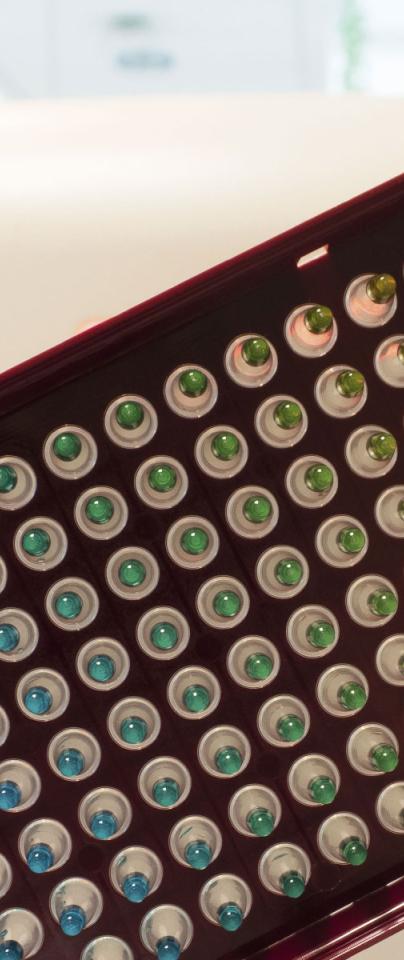
You can access our unique portfolio of single-cell sequencing platforms and methods by getting in touch with our expert single cell genomics team. Either for contract research or a collaboration, we’re ready to help take your research to the next level.
Dr. Johana Hernandez in our single-cell genomics team has recently developed an approach to sort individual bacteria from planktonic cultures and generate high coverage genomes from individual cells. High fidelity amplification allows us to recover single nucleotide variant data from populations as they evolve in response to an antibiotic stress.
This high coverage sequencing data enabled Dr Matt Bawn to look at mutations that arose as the cells evolved and adapted to antibiotics. Some of these mutations, which occur at individual points in the bacterial genome, could then be used to construct a phylogeny or “family tree” of the bacteria in the culture – grouping them into subsets which had different mutations that helped them survive the antibiotic challenge.
Seeing these phylogenies emerge from the data is exciting – it means we can understand antimicrobial resistance from a whole new perspective. The same lab and analytical tools can be applied to investigate the evolutionary processes that underlie the development of cancers.
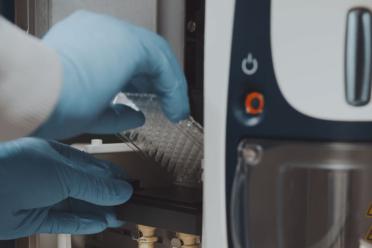

Seeing these phylogenies emerge from the data is exciting – it means we can understand antimicrobial resistance from a whole new perspective.

It has long been known that cancer is a cellular disease – initiated from one renegade cell which mutates, gains a competitive advantage over normal cells, then expands and adapts, eventually becoming resistant to therapy causing harm to the host individual. Single cell genomics approaches let us take tumours apart, to look at their genomes, epigenomes and transcriptomes and see what makes these renegade cells different from all the others.
Silvia Ogbeide, a CRUK funded PhD student in the single-cell genomics team, is developing methods that let us read out the genomes and transcriptomes of individual cells – this lets us see the genetic differences between individual cancer cells and also understand how these differences can change the phenotype of each cell. Her project is part of a large CRUK Accelerator Award which aims to explore cancer evolution in the clinic, at single cell resolution. We are keen to develop these tools to incorporate the spatial organisation of the cells using our Laser Microdissection platform.
It’s exciting to see how these technologies are developing so quickly to change how scientists and clinicians can study cancer, and hopefully contribute to the development of new diagnostics and treatments.
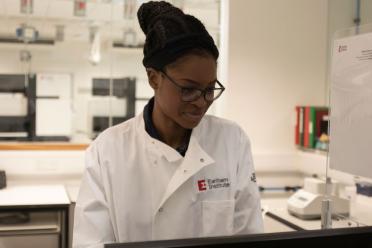
A major interest in my group is understanding how cells transition from one cell “type” to another. We use single cell approaches to study how mouse blood stem cells commit to becoming more mature blood cells. It’s a really beautiful model system, we can identify stem cells with high confidence, and we have lots of tools to study how they function and produce all of the different blood cells you see in circulation.
Dr Laura Mincarelli, a postdoctoral researcher in the single-cell genomics group, has been developing approaches to examine alternative splicing – where cells can make many different RNA molecules, and proteins, from the same gene - using this system. This work has generated some really interesting insights into how complex alternative splicing really is – and can be immediately translated to other systems, including cancer, where splicing is often dysregulated.
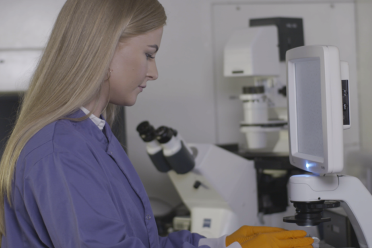
Anita Scoones, a PhD student in the lab, is working on a related project on blood cell differentiation trajectories to look at how stem cells differentiate into mature blood cells, using single-cell RNA sequencing data to computationally order them from stem cells to mature progenitors. She’s also studying how alternative splicing changes as cells commit to one lineage or another.
Dr Edyta Wojtowicz, a Sir Henry Wellcome postdoctoral fellow, has developed tools for RNA-based cell barcoding to trace cell lineage in vivo. By adding a genetic barcode to individual stem cells, we can trace all the cells that come from that original cell – and understand how and why different stem cells produce different amounts and types of mature blood cells.
Overall, these tools and approaches let us start to understand how individual cells make regulatory changes that cause them to function differently. We develop these tools in the mouse blood system, but all of them can be applied way beyond this in a broad array of biological systems including, with some modifications, plants and other organisms.


We can identify stem cells with high confidence, and we have lots of tools to study how they function and produce all of the different blood cells you see in circulation.

Our group works with colleagues on the Darwin Tree of Life project to help understand protists - the hugely diverse single-celled organisms which make up most of the eukaryotic tree of life.
We’re applying many of our platforms to separate individual protists from environmental samples such as pond water, and to adapt our established protocols for single-cell DNA and RNA sequencing to generate high quality genomes and transcriptomes from individual single-celled organisms. The aim is to sequence the genomes of every protist species in the UK.
That’s a difficult and unprecedented task. There are so many protist species out there - with an incredibly diverse range of cell structure and biochemistry – it’s very difficult to have a one size fits all approach to isolating them. We’re using the various platforms we have to sort and isolate these cells from these complex samples – but what’s amazing is that we can use the same approaches to study these cells that we use to study cancer and developmental biology in humans – proof, if it was needed, that single cells are indeed the universal building blocks of life!
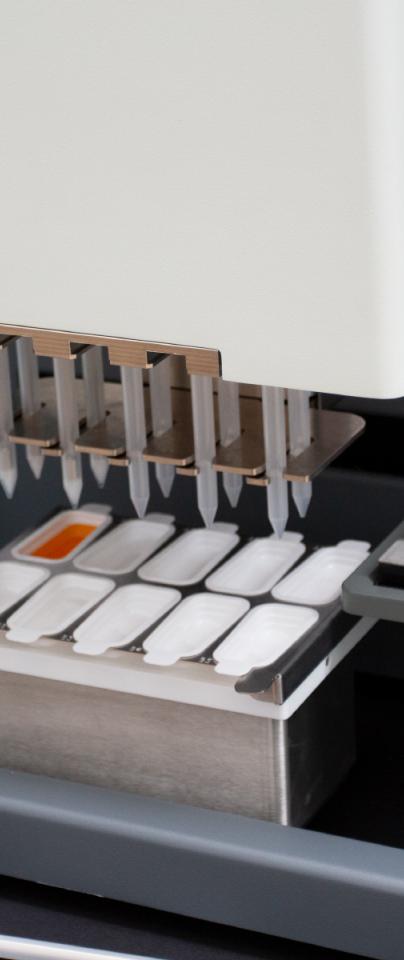
Contact our expert single-cell genomics team today to discuss a project.
Single-cell isolation platforms:
Single-cell sequencing protocols supported by our Genomics Services team:
Want to discuss a project? Get in touch via: